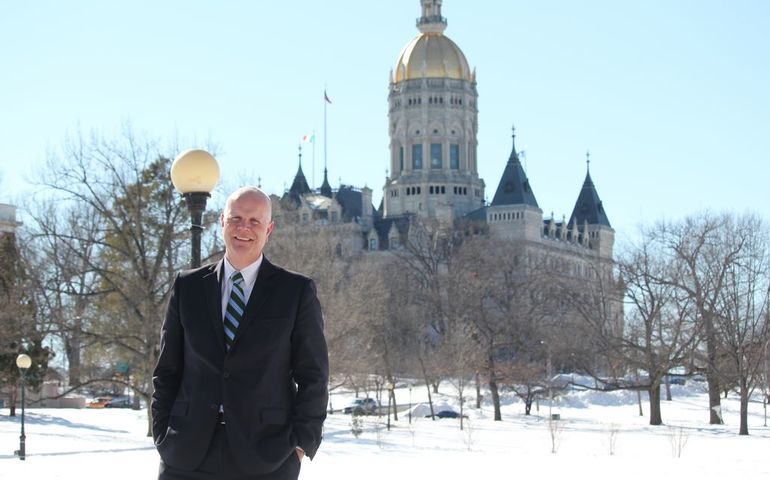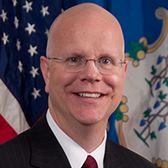Processing Your Payment
Please do not leave this page until complete. This can take a few moments.
-
News
-
Editions
-
- Lists
-
Viewpoints
-
HBJ Events
-
Event Info
- 2024 Economic Outlook Webinar Presented by: NBT Bank
- Best Places to Work in Connecticut 2024
- Top 25 Women In Business Awards 2024
- Connecticut's Family Business Awards 2024
- What's Your Story? A Small Business Giveaway 2024 Presented By: Torrington Savings Bank
- 40 Under Forty Awards 2024
- C-Suite and Lifetime Achievement Awards 2024
- Connecticut's Health Care Heroes Awards 2024
-
-
Business Calendar
-
Custom Content
- News
-
Editions
View Digital Editions
Biweekly Issues
- April 29, 2024
- April 15, 2024
- April 1, 2024
- March 18, 2024
- March 4, 2024
- February 19, 2024
- February 5, 2024
- January 22, 2024
- January 8, 2024
- + More
Special Editions
- Lists
- Viewpoints
-
HBJ Events
Event Info
- View all Events
- 2024 Economic Outlook Webinar Presented by: NBT Bank
- Best Places to Work in Connecticut 2024
- Top 25 Women In Business Awards 2024
- Connecticut's Family Business Awards 2024
- What's Your Story? A Small Business Giveaway 2024 Presented By: Torrington Savings Bank
- 40 Under Forty Awards 2024
- C-Suite and Lifetime Achievement Awards 2024
- Connecticut's Health Care Heroes Awards 2024
Award Honorees
- Business Calendar
- Custom Content
Lembo affirms CT’s estimated $701M budget surplus
 PHOTO | Matt Pilon
Comptroller Kevin Lembo in downtown Hartford's Bushnell Park last March.
PHOTO | Matt Pilon
Comptroller Kevin Lembo in downtown Hartford's Bushnell Park last March.
Comptroller Kevin Lembo has confirmed the state is on pace to close the books on fiscal year 2019 with a roughly $701 million surplus.
Lembo in a monthly letter to Gov. Ned Lamont on Monday said his latest projected $700.9 million surplus aligns with an estimate recently announced by Office of Policy and Management Secretary Melissa McCaw.
Almost $541 million of the estimated surplus will be used to cover funding for a new special capital reserve fund for the Teachers’ Retirement System and a tax settlement with hospitals, which were both part of the adopted biennial state budget.
The comptroller’s office said revenue projections are approximately $129.1 million higher than they were from its June 1 estimate. That’s because of “over-performing” revenue categories including a sales tax revenue increase of $39.9 million, and higher corporate tax inheritance and estate tax revenue of $25 million and $16.5 million, respectively. The public service corporations tax is also $17.5 million ahead of projections.
Lembo said the state’s budget reserve fund, or so-called rainy day fund, will also jump to $2.24 billion thanks to an estimated volatility cap transfer worth $895.5 million and the remaining year-end surplus of $160 million.
The projected year-end surplus would represent about 11.6 percent of the total general fund appropriations for fiscal year 2020, which has a target of 15 percent.
“These over-performing revenue categories are positive signs -- however, in order to help protect against future economic downturns, Connecticut must maintain financial discipline and continue building the budget reserve fund balance to the statutory target of 15 percent,” Lembo said. “Connecticut’s budget results are ultimately dependent upon the performance of the national and state economies.”
Related Content

2022 Giving Guide
This special edition informs and connects businesses with nonprofit organizations that are aligned with what they care about. Each nonprofit profile provides a crisp snapshot of the organization’s mission, goals, area of service, giving and volunteer opportunities and board leadership.
Learn more
Subscribe
Hartford Business Journal provides the top coverage of news, trends, data, politics and personalities of the area’s business community. Get the news and information you need from the award-winning writers at HBJ. Don’t miss out - subscribe today.
Subscribe
2024 Book of Lists
Delivering Vital Marketplace Content and Context to Senior Decision Makers Throughout Greater Hartford and the State ... All Year Long!
Read Here-
2022 Giving Guide
This special edition informs and connects businesses with nonprofit organizations that are aligned with what they care about. Each nonprofit profile provides a crisp snapshot of the organization’s mission, goals, area of service, giving and volunteer opportunities and board leadership.
-
Subscribe
Hartford Business Journal provides the top coverage of news, trends, data, politics and personalities of the area’s business community. Get the news and information you need from the award-winning writers at HBJ. Don’t miss out - subscribe today.
-
2024 Book of Lists
Delivering Vital Marketplace Content and Context to Senior Decision Makers Throughout Greater Hartford and the State ... All Year Long!
ABOUT
ADVERTISE
NEW ENGLAND BUSINESS MEDIA SITES
No articles left
Get access now
In order to use this feature, we need some information from you. You can also login or register for a free account.
By clicking submit you are agreeing to our cookie usage and Privacy Policy
Already have an account? Login
Already have an account? Login
Want to create an account? Register
Get access now
In order to use this feature, we need some information from you. You can also login or register for a free account.
By clicking submit you are agreeing to our cookie usage and Privacy Policy
Already have an account? Login
Already have an account? Login
Want to create an account? Register










0 Comments